The Gift of South Dakota
Subscriptions to South Dakota Magazine make great gifts!
Subscribe today — 1 year (6 issues) is just $29!
South Dakota’s Stockholm
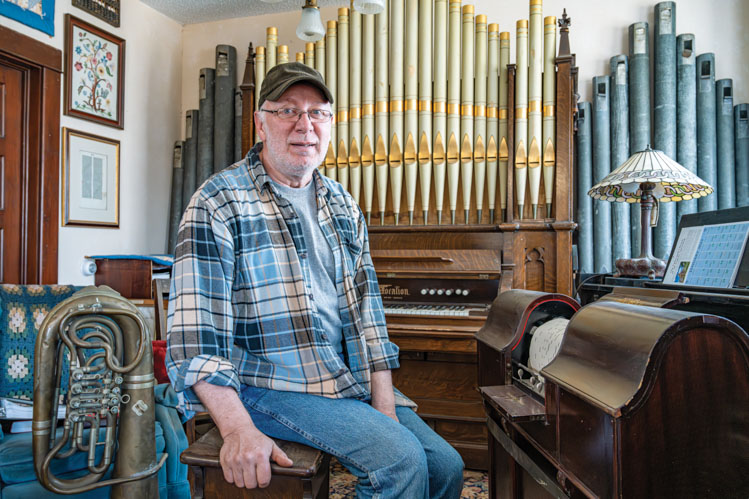 |
| Steve Misener is known around the world for his historic piano collection and the knowledge he's accumulated from years of research into piano history. |
Stockholm, the capital of Sweden, is built on 14 islands and features more than 50 bridges. South Dakota’s Stockholm sits on a small hilltop in the Coteau Des Prairies roughly 15 miles from Minnesota. Stockholm was never very large — maybe 150 people at its peak in the 1920s — but longtime residents are still proud it survives as a bedroom community for nearby Milbank and Watertown.
The town’s Swedish roots can be seen in yard and house decorations and displayed inside Alice’s Restaurant. These days, Stockholm is known for its Buggy Museum and Steve Misener’s vintage piano collection.
This corner of South Dakota has a long history of dairy farming. Lifelong resident Arlo Levisen’s grandfather was a butter maker, and the Stockholm creamery was in business until the 1960s when area dairy farmers began supplying the rapidly growing Valley Queen Cheese in Milbank. Smaller operations couldn’t keep up.
“The school closed in 1970,” Levisen says. “My mom was the last teacher.”
Education is a decades-long family tradition for the Levisens and Arlo is proud to say he finished his career as the superintendent of the school where his mother graduated.
Alex “Richard” Thompson and son Alex “Richie” Jr. own Alice’s Restaurant on Main Street. Locals gather here for lively morning conversations and to roll dice to see who pays for the coffee. The restaurant was originally built as a hotel for salesmen traveling on the railroad. There are still five rooms upstairs, but they aren’t advertised; they are mainly used when a wedding or some other gathering happens in town.
Following local tradition, women still sit in the north dining room and men in the south. “You’ll need your hip boots over on that side,” the women laugh about their spouses’ penchant for telling tall tales. Some describe mornings here as a “therapy session.” Monthly birthday parties for the regulars include cake and singing.
Thompson Sr. remembers that Stockholm “used to be a going concern, but just kind of dribbled away over the years.” The town never had a theater, but summer Saturday nights included movies projected on the large white door of the lumber yard for the audience in lawn chairs.
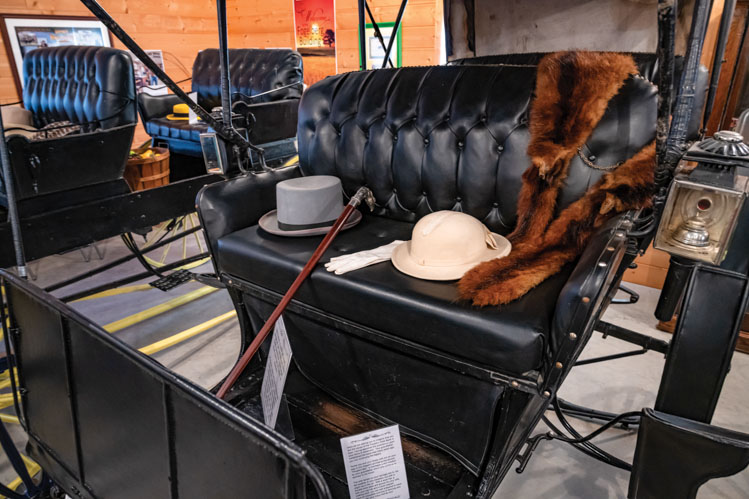 |
| The Stockholm Agricultural Museum is a collection of 12 buildings, with the Buggy Museum being the newest. |
Religion has been a strong part of the town from the start and Judy Dorman Rieke is proud that the town has always been dry. “It just goes to show a town can make it without booze,” she said. Various traditional Swedish churches, aspects of Dakota culture, and newer versions of Hutterite and Amish cultures blend here.
A collection of 12 buildings comprises the Stockholm Agricultural Museum under the auspices of the Grant County Historical Society, with the Buggy Museum being the newest. A 2008 windstorm that damaged buildings and a few buggies inspired Levisen and others to put up a new building and collect more buggies and sleighs from the area.
Levisen says the project was funded by David Johnson, nephew of longtime Stockholm area farmer Henry Fogelberg. Several buggies have been completely restored, while some were in good enough shape to display in their donated conditions. Highlights in the collection of 19 vehicles include a horse-drawn hearse provided by the Mundwiler Funeral Home in Milbank and a Russian-Canadian sleigh. Most came from within 50 miles of Stockholm. “All these buggies have a connection to this area,” Levisen says.
Across Main Street from Alice’s Restaurant is the former Stockholm grocery store, now home to Steve Misener’s Piano Shoppe. “Welcome to the center of the music world in Stockholm,” he laughed as he opened the door.
“The collection of antique pianos is where my passion really lies,” he explained, but he’s also known for instrument tuning and repair. He has traveled between Chicago, Minneapolis and Denver tuning pianos.
Misener is happy to show his collection of 130 major instruments to anyone who calls ahead. Even though some are stored and covered, he can easily give you details on each piece’s history. A walk through is a history lesson and demonstration of the knowledge collected in Misener’s memory. “My 1574 organ is one of the oldest in North America,” he said.
“This is a Broadwood,” he said, pointing to another. “Beethoven had one.” He paused when asked about the newest piece in his collection before deciding it is a 1940 model.
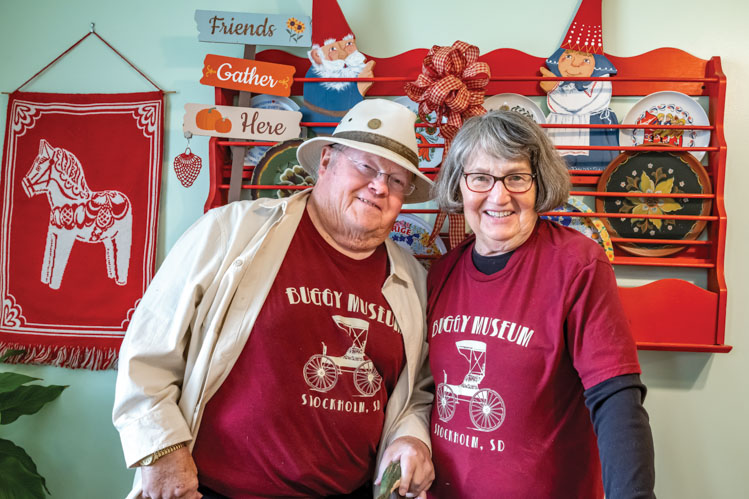 |
| Arlo and Paulette Levisen have played a large role in creating Stockholm's Buggy Museum. |
Tracking the history of the pianos has become a passion as well. Using serial numbers, sales receipts, newspaper accounts of concert performances, and passports assigned to instruments that traveled overseas, he’s been able to document the lives of several of the pianos in his collection. “What’s the story? Who owned this? Who played it? It’s just fascinating,” he said. “The detective work is fun.”
He bills one of his pianos as “the piano that Brahms nearly played.” Famous German composer and pianist Johannes Brahms was scheduled to perform on it but became ill and did not play. Another he has connected to a story of the hiding of the Liberty Bell from British troops in Philadelphia.
As Misener built his collection he sought out experts in the field with questions. “About 10 years ago I realized the questions were beginning to come to me. I had never seen myself as the go-to person, but I guess it has come to that.”
Occasional performances and history presentations for schools mean Misener’s pianos do get played if their condition allows. Some are kept as historic pieces past their musical prime.
Levisen is working to bring more visitors to Stockholm and especially to the Buggy Museum. A series of special events has already created interest, including a Burger Battle in June.
Editor’s Note: This story is revised from the July/August 2023 issue of South Dakota Magazine. To order a copy or to subscribe, call (800) 456-5117.

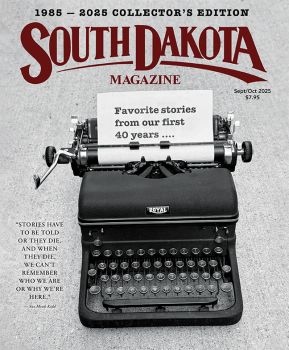




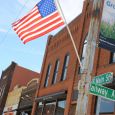

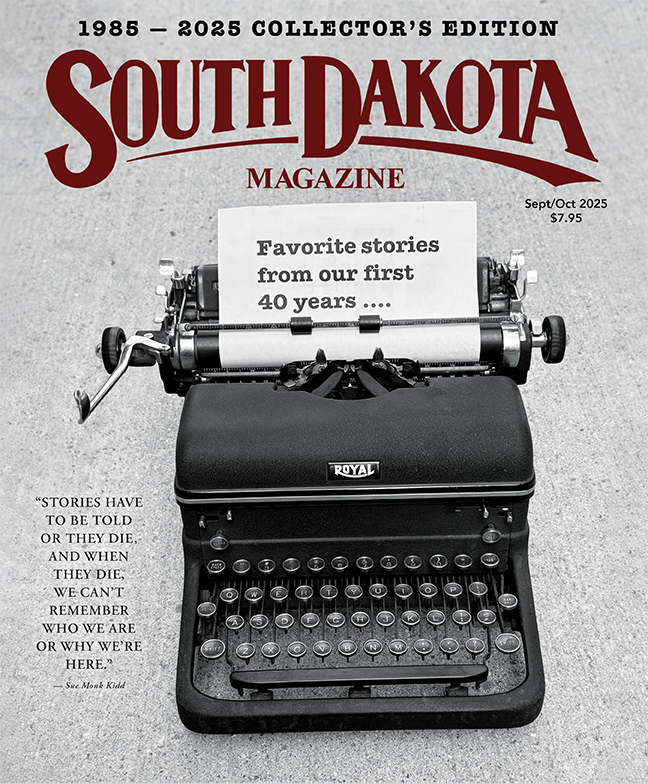

Comments